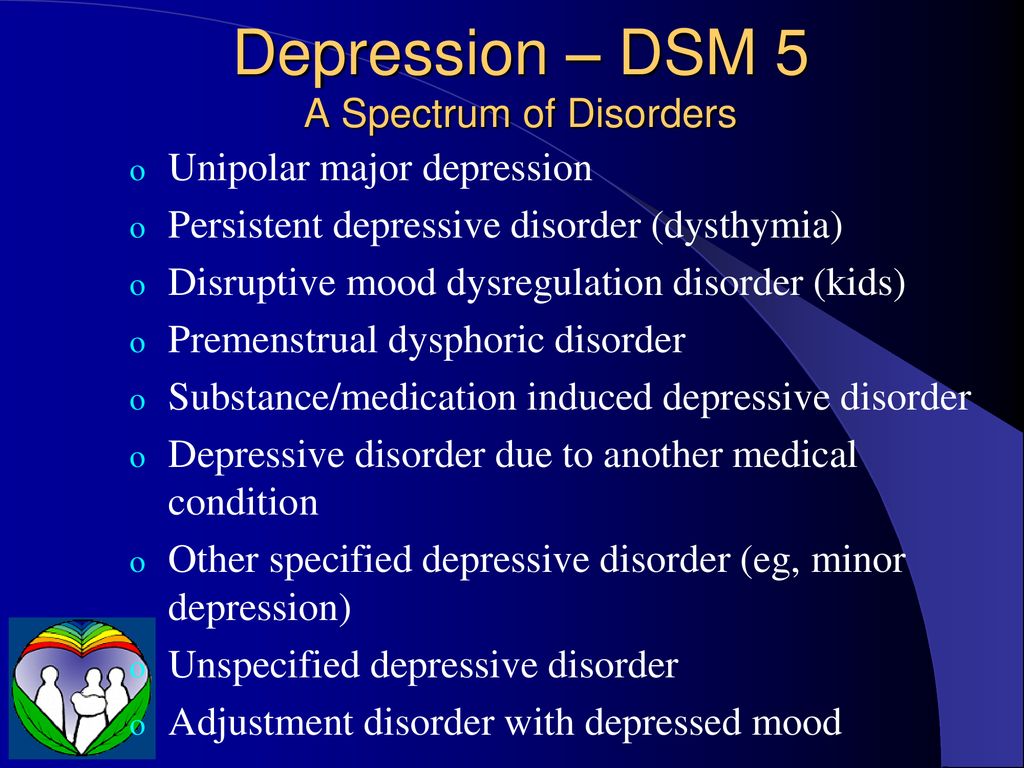

(11) other physical symptoms such as breast tenderness or swelling, joint or muscle pain, a sensation of bloating, weight gain Major Depressive Disorder (10) a subjective sense of being overwhelmed or out of control (8) marked change in appetite, overeating, or specific food cravings (7) lethargy, easy fatigability, or marked lack of energy (6) subjective sense of difficulty in concentration (5) decreased interest in usual activities (e.g., work, school, friends, hobbies) (4) marked anxiety, tension, feelings of being “keyed up” or “on edge”

(3) markedly depressed mood, feelings of hopelessness, or self-deprecating thoughts

(2) marked irritability or anger or increased interpersonal conflicts (1) marked affective liability (e.g., mood swings feeling suddenly sad or teaful or increased sensitivity to rejection) In most menstrual cycles during the past year, five (or more) of the following symptoms occurred during the final week before the onset of menses, started to improve within a few days after the onset of menses, and were minimal or absent in the week postmenses, with at least one of the symptoms being either (1), (2), (3), or (4): It’s like the symptom criteria are similar to those in the draft revision of the DSM-5: Premenstrual Dysphoric Disorder is now an official diagnosis in the DSM-5. This new disorder can be diagnosed in children up to age 18 years who exhibit persistent irritability and frequent episodes of extreme, out-of-control behavior. Disruptive Mood Dysregulation disorder is a new condition introduced in the DSM-5 to address symptoms that had been labeled as “childhood bipolar disorder” before the DSM-5’s publication.


 0 kommentar(er)
0 kommentar(er)
